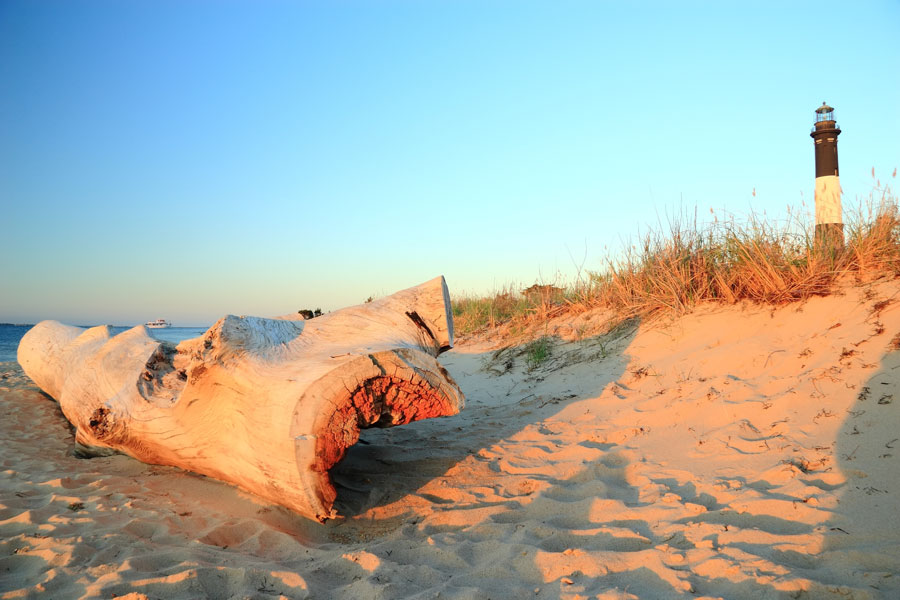Fire Island National Seashore
Fire Island, New York

Fire Island is a barrier island situated off the southern coast of Long Island, New York. Stretching approximately 32 miles long and varying in width, Fire Island is renowned for its stunning beaches, pristine natural habitats, and unique communities. Rich in biodiversity and cultural heritage, the island has become a cherished destination for visitors seeking relaxation, outdoor recreation, and a respite from the demands of urban life.
Geography:
Fire Island is located south of Long Island’s South Shore, separating the Great South Bay from the Atlantic Ocean. The island encompasses several distinct communities, including Fire Island Pines, Cherry Grove, Ocean Beach, and Kismet, each with its own character and charm. The island’s landscape is characterized by sandy dunes, salt marshes, maritime forests, and coastal wetlands, providing habitat for a variety of plant and animal species.
History:
The history of Fire Island is as rich and diverse as its natural environment. Originally inhabited by Native American tribes, the island later became a haven for pirates, whalers, and fishermen during the colonial era. In the late 19th century, Fire Island began to attract tourists and vacationers drawn to its scenic beauty and recreational opportunities. Over time, the island’s communities evolved into vibrant enclaves known for their bohemian spirit, artistic expression, and LGBTQ+ culture.
Features and Attractions:
Fire Island offers a wealth of attractions and amenities for visitors to enjoy:
- Beaches: Fire Island’s beaches are renowned for their pristine beauty, soft sand, and crystal-clear waters. Popular beach destinations include Robert Moses State Park, Fire Island National Seashore, and Smith Point County Park.
- Lighthouses: The island is home to several historic lighthouses, including the Fire Island Lighthouse and the Cedar Island Lighthouse, which offer panoramic views of the surrounding landscape and maritime history.
- Wildlife: Fire Island provides habitat for a diverse array of plant and animal species, including ospreys, deer, seals, and migratory birds. The island’s protected natural areas, such as the Sunken Forest and Otis Pike Fire Island High Dune Wilderness, offer opportunities for hiking, birdwatching, and wildlife observation.
- Communities: Fire Island’s communities are known for their unique character and laid-back atmosphere. Visitors can explore charming villages, boutique shops, art galleries, and eclectic restaurants, experiencing the island’s vibrant culture and sense of community.
Conservation and Preservation:
Efforts to conserve and preserve Fire Island’s natural resources and cultural heritage are ongoing. Organizations such as the Fire Island National Seashore and local environmental groups work to protect sensitive habitats, promote sustainable tourism practices, and raise awareness about the importance of coastal conservation.
Visitor Experience:
Each year, Fire Island attracts thousands of visitors who come to enjoy its pristine beaches, outdoor recreation, and relaxed atmosphere. Whether swimming, sunbathing, kayaking, or simply taking in the island’s breathtaking sunsets, visitors are treated to an unforgettable experience that celebrates the beauty and diversity of Long Island’s coastal environment.
Fire Island stands as a treasured destination that celebrates the natural beauty, cultural diversity, and ecological richness of Long Island’s southern coast. With its stunning landscapes, vibrant communities, and abundant recreational opportunities, the island offers a sanctuary for visitors seeking solace, inspiration, and connection with nature. As a cherished landmark and cultural treasure, Fire Island continues to captivate the hearts and imaginations of all who visit, embodying the timeless allure of coastal living.

